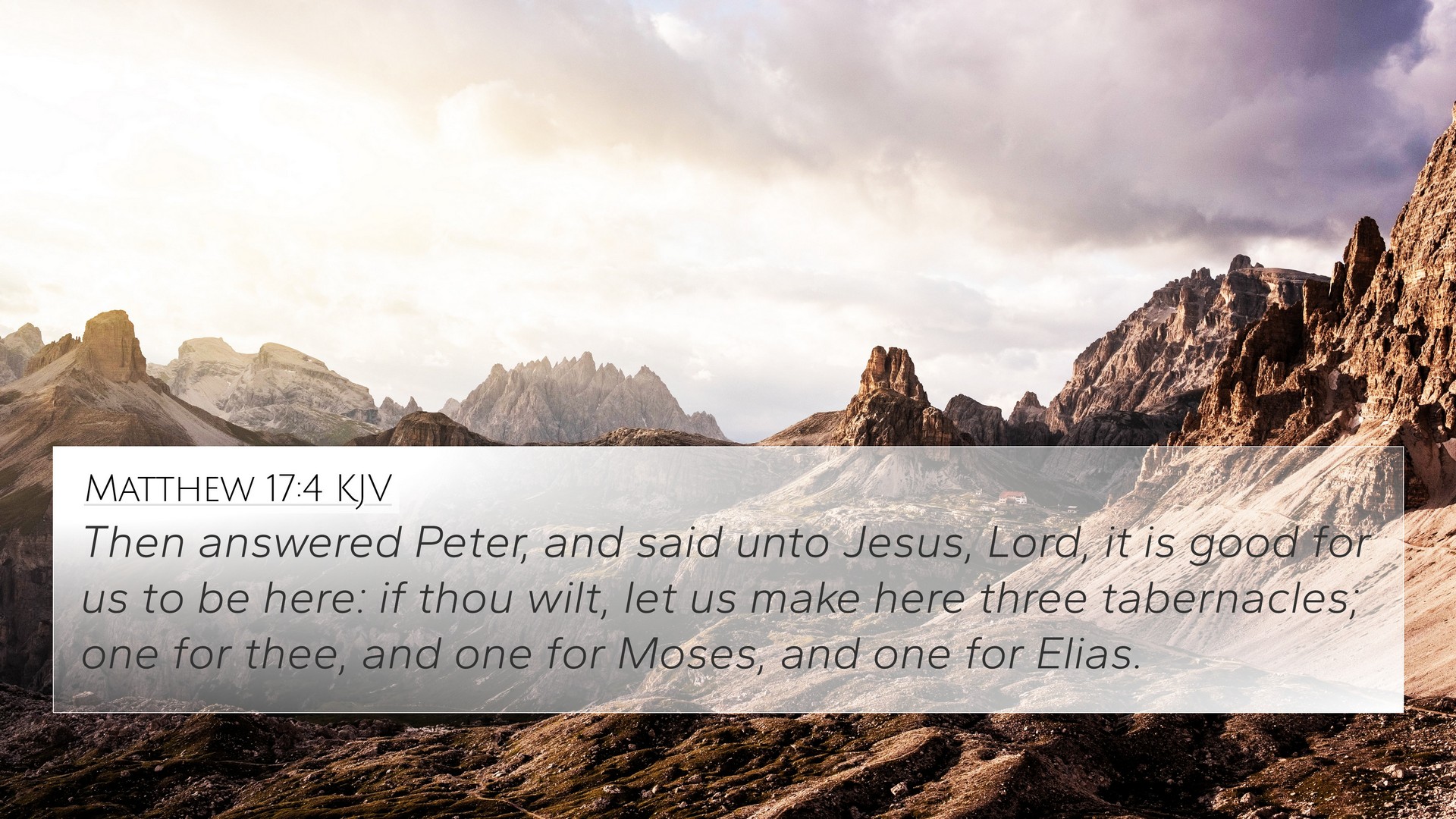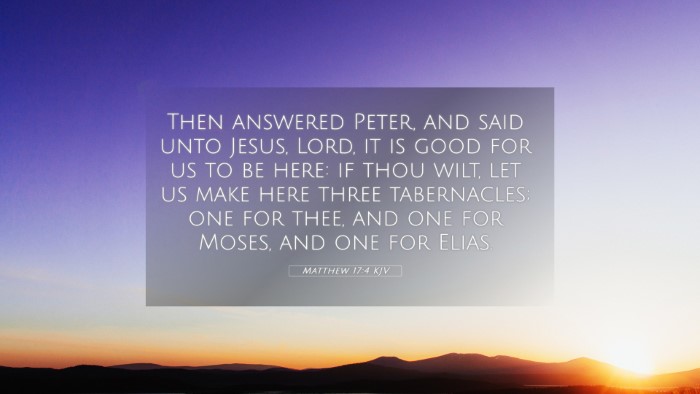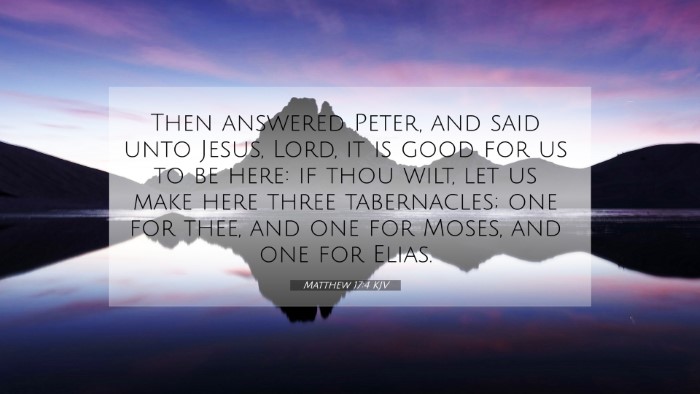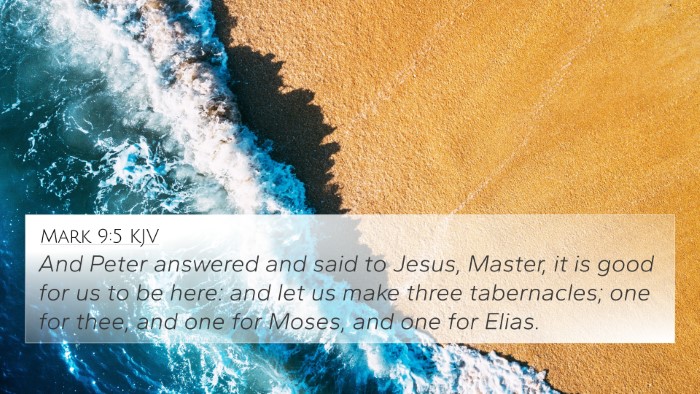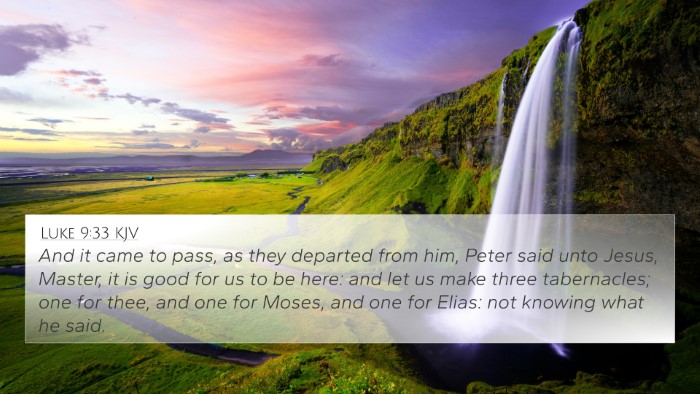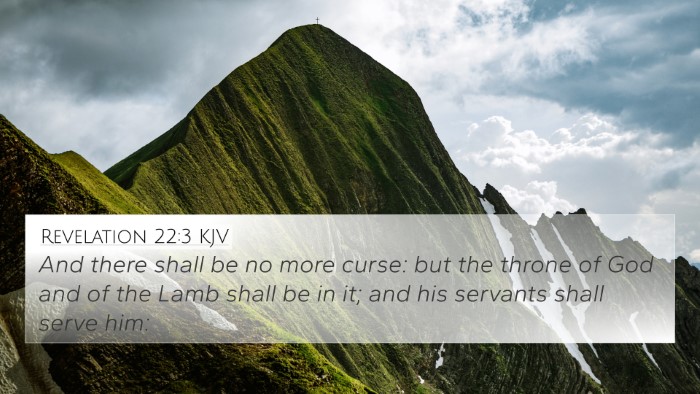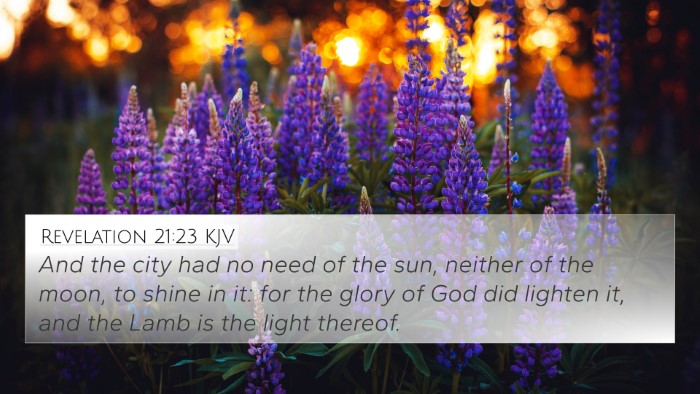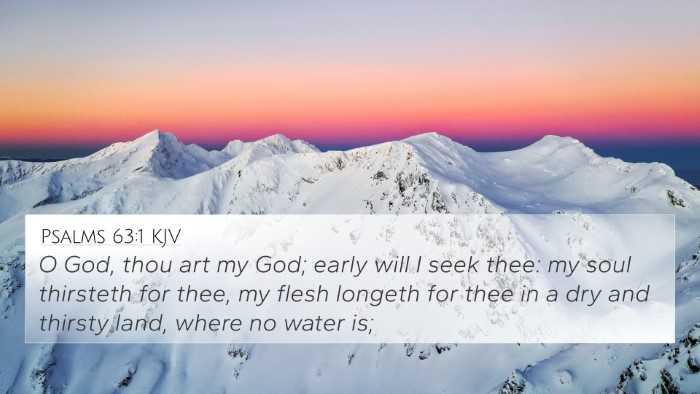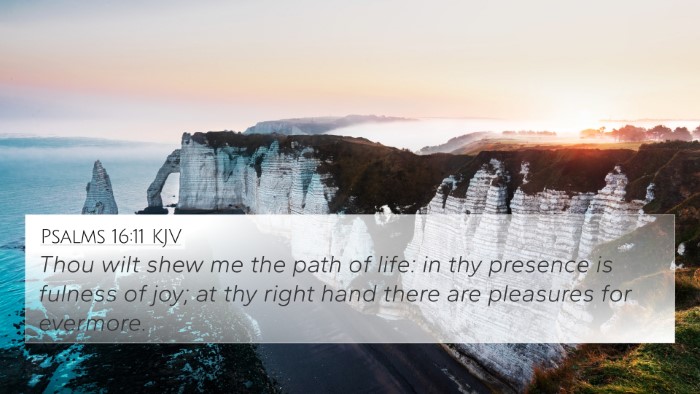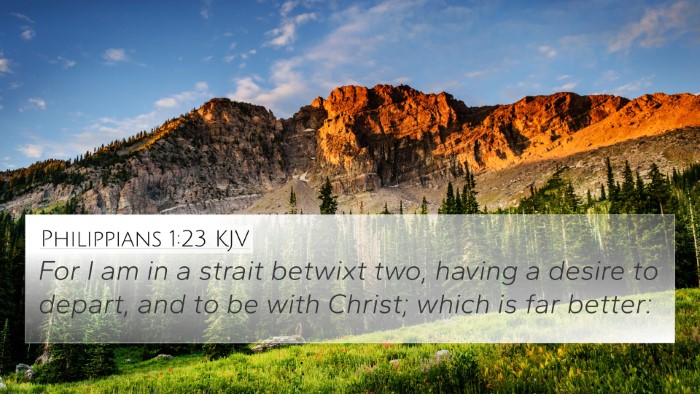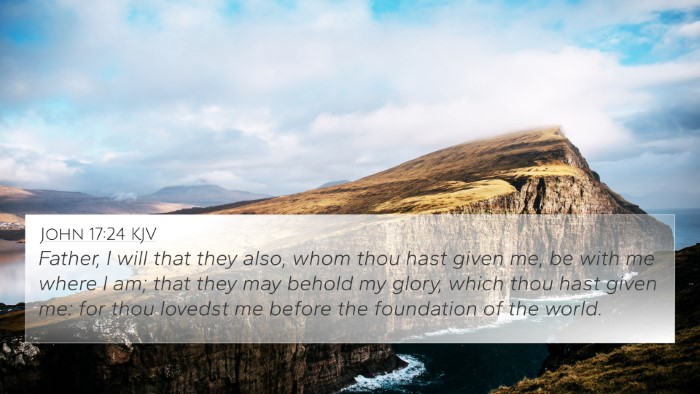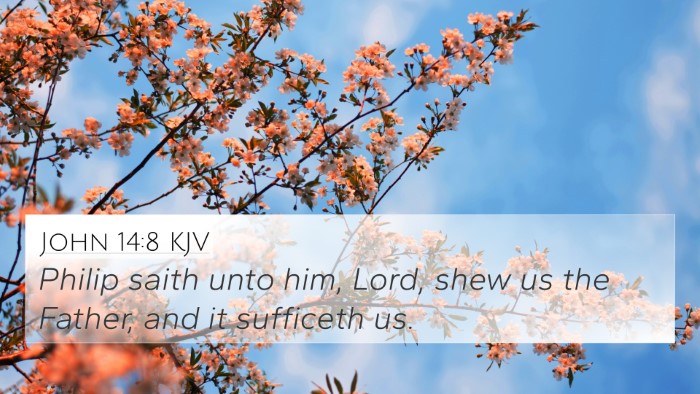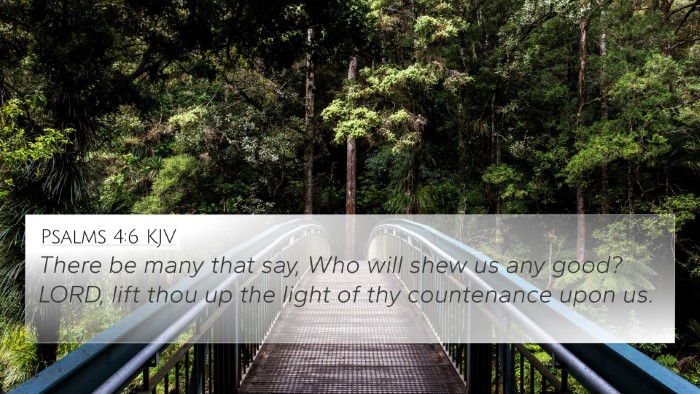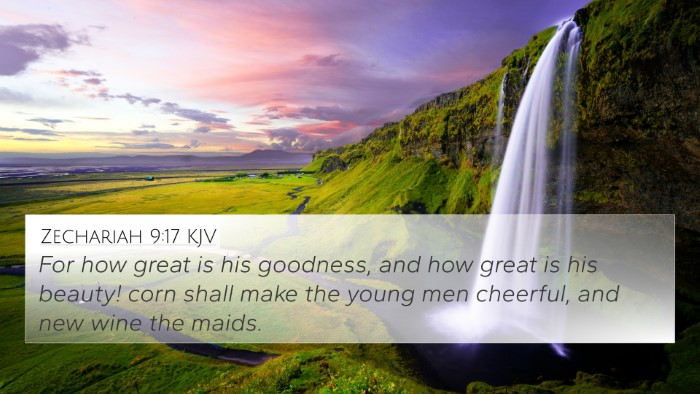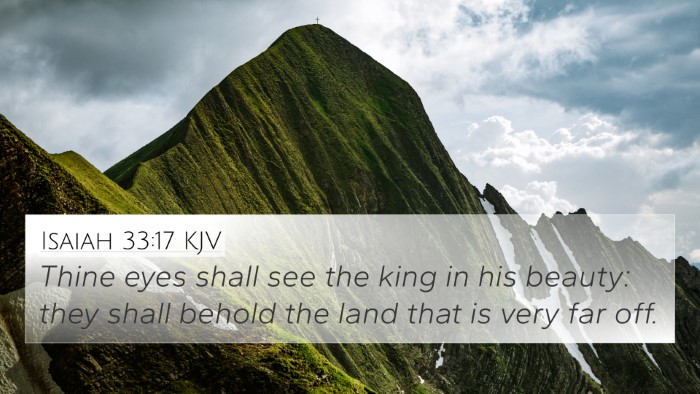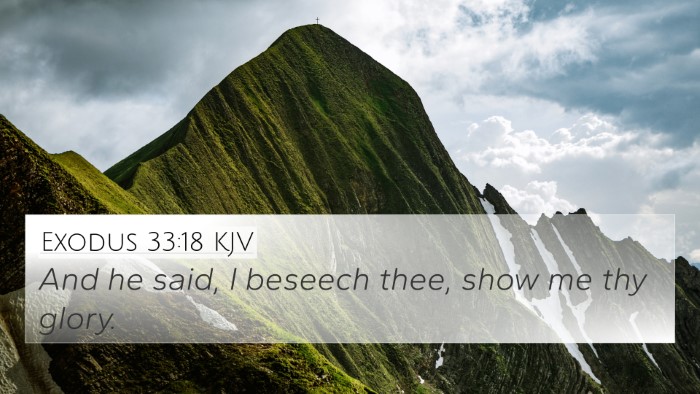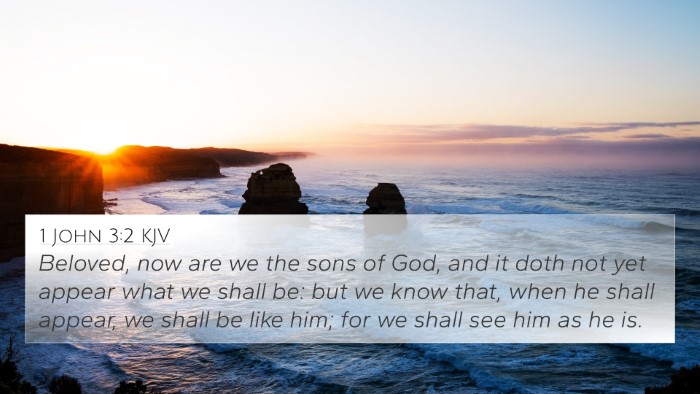Understanding Matthew 17:4
Bible Verse: Matthew 17:4
In this verse, we find Peter exclaiming during the Transfiguration of Jesus on the mountain: "Lord, it is good for us to be here. If you wish, I will put up three shelters—one for you, one for Moses and one for Elijah." This moment captures Peter’s desire to prolong the divine experience he is witnessing.
Verse Meaning and Insights
The declaration of Peter holds significant meaning that can be drawn from various public domain commentaries, showcasing the richness of context and interpretation.
Matthew Henry's Commentary
Matthew Henry notes that Peter’s statement reveals his impulsive nature and a desire to honor Jesus along with Moses and Elijah. Henry reflects on Peter's misunderstanding of the moment, highlighting that the true purpose of the Transfiguration was to reveal Christ's divine glory and not merely to establish him among the prophets.
Albert Barnes' Notes
Albert Barnes explains that the suggestion of building three tabernacles demonstrates Peter’s admirable zeal, but it also underscores his lack of understanding regarding the significance of Jesus' mission. Barnes emphasizes that Peter wanted to preserve the moment rather than grasp its intended purpose—that Jesus was to fulfill and surpass the law (represented by Moses) and the prophets (represented by Elijah).
Adam Clarke's Commentary
Adam Clarke takes a closer look at the formality of Peter's proposal. Clarke suggests that the shelters (or booths) he wished to build could symbolize the Jewish practice of celebrating the Feast of Tabernacles. Hence, Peter’s intent might have been to institutionalize this sacred experience. Clarke also highlights the overarching divine plan, which indicates that Jesus must continue with his mission beyond the mountaintop experience.
Cross-References to Explore
To enhance understanding, here are some cross-references that relate to Matthew 17:4:
- Luke 9:33 - Similar recounting of Peter's statement during the Transfiguration.
- Exodus 24:15-18 - Moses receives the law on Mount Sinai, paralleling this mountaintop experience.
- 2 Peter 1:16-18 - Peter later references this moment when he affirms the truth of their testimony.
- Mark 9:5 - Another Gospel account detailing Peter's reaction and what he wanted to do.
- Job 4:15-17 - Emphasizing the eternal nature and authority of God in contrast to human insignificance.
- Matthew 17:1-3 - The broader context of the Transfiguration, showing who appeared with Jesus.
- Isaiah 53:1-2 - Foretelling the glory of Christ that would not be recognized by many, paralleling the moment Peter witnessed.
Connections Between the Verse and Broader Themes
This verse provides a rich ground for thematic Bible verse connections, as Peter's desire to build shelters reveals key themes such as:
- Faith and Doubt: Peter's faith in wanting to honor Christ contrasts with his misunderstanding of Jesus' mission.
- The Presence of God: Such mountaintop experiences reflect moments of divine presence and revelation.
- Misplaced Priorities: Emphasizes how human desires can sometimes distract from spiritual truths.
- Legacy of Prophets: The appearance of Moses and Elijah represents the continuity of God’s revelation through His prophets.
How to Use Cross-References in Bible Study
Utilizing cross-reference guides can provide a deeper understanding of the connections between different Bible verses. They serve as tools to bridge themes and God's revelations across scripture. Here are a few methods to implement:
- Utilize a bible concordance to identify similar phrases or concepts in scripture.
- Engage in a comparative study of specific books in the Bible, such as the Gospels, to find parallels like those found in Matthew 17:4.
- Reflect on themes that appear in multiple books, providing a broader understanding of God's message.
- Make use of scriptural cross-referencing in personal study sessions to delve into links between the Old and New Testaments.
Conclusion
Matthew 17:4 serves as a powerful illustration of human eagerness to cling to divine moments, while simultaneously reflecting our misunderstandings of God's broader purposes. By exploring the cross-references and detailed commentaries, one can uncover deeper meanings and connections, allowing for enriched study and understanding of the Scriptures.
